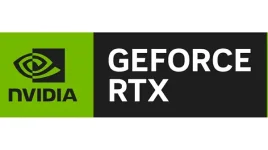Game Tech Giants Roll Out New Frame Smoothing Tools.
NVIDIA and AMD have created new ways to make games look smoother on screen. These tools work by adding extra frames between the ones games normally show.
NVIDIA calls its version "Smooth Motion." Users can find it in their graphics settings under Dynamic Super Resolution. AMD offers a similar feature named "Fluid Motion Frames."
The system looks at current and past frames to guess what should come next. This helps games feel more fluid, though fast action scenes might show some visual glitches.
RTX 50 series owners can use Smooth Motion with DirectX 11 and 12 games. NVIDIA plans to add support for 4000 series cards later.
These driver-based tools differ from special game features like DLSS. Game-built options often work better because they use more detailed data and AI training. But they need game makers to add them first.
Smooth Motion fills an important gap. It runs on many older games that might never add newer graphics features. The trade-off is that the system affects all parts of the screen, including menus and text.
MSI AfterBurner's latest update includes support for monitoring these new frame features through its display overlay.
NVIDIA and AMD have created new ways to make games look smoother on screen. These tools work by adding extra frames between the ones games normally show.
NVIDIA calls its version "Smooth Motion." Users can find it in their graphics settings under Dynamic Super Resolution. AMD offers a similar feature named "Fluid Motion Frames."
The system looks at current and past frames to guess what should come next. This helps games feel more fluid, though fast action scenes might show some visual glitches.
RTX 50 series owners can use Smooth Motion with DirectX 11 and 12 games. NVIDIA plans to add support for 4000 series cards later.
These driver-based tools differ from special game features like DLSS. Game-built options often work better because they use more detailed data and AI training. But they need game makers to add them first.
Smooth Motion fills an important gap. It runs on many older games that might never add newer graphics features. The trade-off is that the system affects all parts of the screen, including menus and text.
MSI AfterBurner's latest update includes support for monitoring these new frame features through its display overlay.












